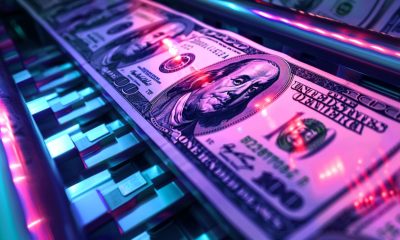

others
BABA breaks below $79, down 10% on Thursday after revenue miss – Crypto News
- BABA stock loses 8%, moving below $80.
- Revenue for the fiscal Q2 misses consensus by $230 million.
- Management decides against spinning off the cloud business for now.
- Alibaba issues a $1 annual dividend to holders of ADS shares.
Alibaba (BABA) stock has sold off 10%, driving closely to long-term support at $78. The market did not appreciated the Chinese e-commerce leader’s fiscal second-quarter earnings results on Thursday. Alibaba missed the quarter’s sales consensus by $230 million. Management has also decided against spinning off its cloud business due to US semiconductor restrictions.
The cash-strong company still introduced a dividend for foreign investors, who have been disappointed by the failure of BABA stock to rebound from a 75% sell-off that began more than three years ago.
US stocks are beginning Thursday’s session at a loss following three straight days of optimism and even euphoria. Cisco (CSCO) and Palo Alto Networks (PANW) both traded lower in line with Alibaba as both technology stocks presented reduced guidance for the present quarter and the full year. Walmart (WMT) beat consensus on its quarter but warned of a slowdown in consumer spending beginning in the second half of October. This news rattled the stock market.
Alibaba Stock Earnings: Another earnings beat, another revenue miss
The good news was Alibaba’s top line – $2.14 per share, which was 5 cents better than Wall Street Consensus. Adjusted earnings for owners of American Depositary Shares (ADS) rose 21% from a year ago.
Revenue rose 8.5% from a year ago to $30.81 billion but missed the consensus for $31.04 billion. It has become a common phenomenon for Alibaba to beat consensus for earnings but miss consensus for sales, which have largely consolidated around the $30 billion mark over the past three years. Management said that revenue was somewhat reduced due to Alibaba focusing on higher-quality revenue streams and giving up on lower-margin, project-based revenue.
Management also introduced a $1 annual dividend for ADS shareholders, which will be paid on January 18, 2024 for shareholders of record on December 21. This gives Alibaba stock close to a 1% forward dividend yield.
The most prominent news from management’s quarterly release is that Alibaba will hold off on spinning off its cloud business following the Biden administration’s new export controls for advanced computing chips. Management felt that the cloud segment would not be able to achieve a worthwhile valuation in a spin-off due to concerns about the US’s new semiconductor policy.
Both its logistics segment, Cainiao, and its digital commerce segment are still in the process of raising external funding for a spin-off. During the fiscal second quarter, Alibaba spent $1.7 billion buying back 18.6 million ADSs.
S&P 500 FAQs
The S&P 500 is a widely followed stock price index which measures the performance of 500 publicly owned companies, and is seen as a broad measure of the US stock market. Each company’s influence on the computation of the index is weighted based on market capitalization. This is calculated by multiplying the number of publicly traded shares of the company by the share price. The S&P 500 index has achieved impressive returns – $1.00 invested in 1970 would have yielded a return of almost $192.00 in 2022. The average annual return since its inception in 1957 has been 11.9%.
Companies are selected by committee, unlike some other indexes where they are included based on set rules. Still, they must meet certain eligibility criteria, the most important of which is market capitalization, which must be greater than or equal to $12.7 billion. Other criteria include liquidity, domicile, public float, sector, financial viability, length of time publicly traded, and representation of the industries in the economy of the United States. The nine largest companies in the index account for 27.8% of the market capitalization of the index.
There are a number of ways to trade the S&P 500. Most retail brokers and spread betting platforms allow traders to use Contracts for Difference (CFD) to place bets on the direction of the price. In addition, that can buy into Index, Mutual and Exchange Traded Funds (ETF) that track the price of the S&P 500. The most liquid of the ETFs is State Street Corporation’s SPY. The Chicago Mercantile Exchange (CME) offers futures contracts in the index and the Chicago Board of Options (CMOE) offers options as well as ETFs, inverse ETFs and leveraged ETFs.
Many different factors drive the S&P 500 but mainly it is the aggregate performance of the component companies revealed in their quarterly and annual company earnings reports. US and global macroeconomic data also contributes as it impacts on investor sentiment, which if positive drives gains. The level of interest rates, set by the Federal Reserve (Fed), also influences the S&P 500 as it affects the cost of credit, on which many corporations are heavily reliant. Therefore, inflation can be a major driver as well as other metrics which impact the Fed decisions.
Alibaba stock forecast: BABA descends just above support at $78
Alibaba stock has formed a Doji candle just below the $80 handle an hour into the Thursday session. This is not too far above the $78 support structure that held up in both May 2022 and May 2023. If it fails to hold, that could send BABA stock back to the $58 and $64 support band that held up a major sell-off in October 2022.
To regain interest from bulls, BABA needs to overtake the $82 support level and then upend resistance in the vicinity at and above $88.
BABA daily stock chart
-
![DIS Elliott Wave technical analysis [Video]](https://dripp.zone/news/wp-content/uploads/2025/06/DIS-Elliott-Wave-technical-analysis-Video-Crypto-News-400x240.jpg)
![DIS Elliott Wave technical analysis [Video]](https://dripp.zone/news/wp-content/uploads/2025/06/DIS-Elliott-Wave-technical-analysis-Video-Crypto-News-80x80.jpg) others1 week ago
others1 week agoSkies are clearing for Delta as stock soars 13% on earnings beat – Crypto News
-
![DIS Elliott Wave technical analysis [Video]](https://dripp.zone/news/wp-content/uploads/2025/06/DIS-Elliott-Wave-technical-analysis-Video-Crypto-News-400x240.jpg)
![DIS Elliott Wave technical analysis [Video]](https://dripp.zone/news/wp-content/uploads/2025/06/DIS-Elliott-Wave-technical-analysis-Video-Crypto-News-80x80.jpg) others1 week ago
others1 week agoSkies are clearing for Delta as stock soars 13% on earnings beat – Crypto News
-

 Blockchain1 week ago
Blockchain1 week agoInsomnia Labs Debuts Stablecoin Credit Platform for Creators – Crypto News
-

 Blockchain1 week ago
Blockchain1 week agoAnt Group Eyes USDC Integration Circle’s: Report – Crypto News
-

 Cryptocurrency5 days ago
Cryptocurrency5 days agoWhale Sells $407K TRUMP, Loses $1.37M in Exit – Crypto News
-

 Blockchain1 week ago
Blockchain1 week agoBinance Founder Backs BNB Treasury Company Aiming For US IPO – Crypto News
-
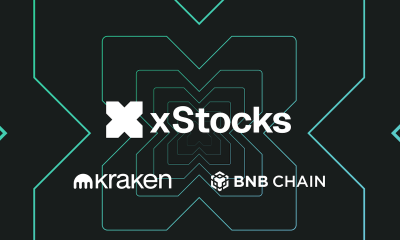
 Blockchain1 week ago
Blockchain1 week agoKraken and Backed Expand Tokenized Equities to BNB Chain – Crypto News
-
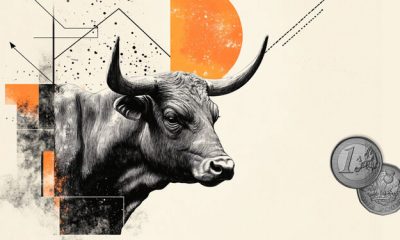
 others1 week ago
others1 week agoEUR/GBP posts modest gain above 0.8600 ahead of German inflation data – Crypto News
-

 Metaverse1 week ago
Metaverse1 week agoHow Brands Can Deepen Customer Connections in the Metaverse – Crypto News
-

 Cryptocurrency1 week ago
Cryptocurrency1 week agoBitcoin Breaks New Record at $111K, What’s Fueling the $120K Price Target? – Crypto News
-
Technology1 week ago
XRP Eyes $3 Breakout Amid Rising BlackRock ETF Speculation – Crypto News
-
Technology1 week ago
Breaking: SharpLink Purchases 10,000 ETH from Ethereum Foundation, SBET Stock Up 7% – Crypto News
-

 others1 week ago
others1 week agoEUR/GBP climbs as weak UK data fuels BoE rate cut speculation – Crypto News
-

 Blockchain1 week ago
Blockchain1 week agoBitcoin Hits All-Time High as Crypto Legislation Votes Near – Crypto News
-
Business1 week ago
PENGU Rallies Over 20% Amid Coinbase’s Pudgy Penguins PFP Frenzy – Crypto News
-

 Blockchain6 days ago
Blockchain6 days agoRobinhood Dealing With Fallout of Tokenized Equities Offering – Crypto News
-

 Blockchain1 week ago
Blockchain1 week agoEthereum Bulls Roar — $3K Beckons After 5% Spike – Crypto News
-

 Blockchain1 week ago
Blockchain1 week agoAustralia Banks Join Digital Currency Trial for Tokenized Assets – Crypto News
-
Business1 week ago
Did Ripple Really Win XRP Lawsuit Despite $125M Fine? Lawyer Fires Back at CEO – Crypto News
-

 Cryptocurrency1 week ago
Cryptocurrency1 week agoXRP price forecast as coins surges 2.19% to $2.33 – Crypto News
-

 Technology1 week ago
Technology1 week agoPerplexity launches Comet, an AI-powered browser to challenge Google Chrome; OpenAI expected to enter the space soon – Crypto News
-

 Blockchain1 week ago
Blockchain1 week agoSUI Chart Pattern Confirmation Sets $3.89 Price Target – Crypto News
-
others1 week ago
Trump Jr. Backed Thumzup Media To Invest In ETH, XRP, SOL, DOGE And LTC – Crypto News
-

 Technology1 week ago
Technology1 week agoGoogle’s worst nightmare? OpenAI’s new AI web browser is coming soon to challenge Chrome – Crypto News
-
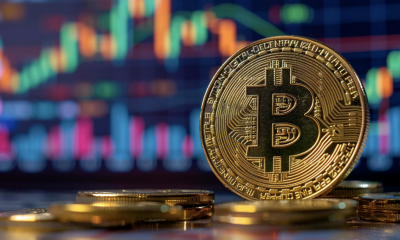
 Cryptocurrency1 week ago
Cryptocurrency1 week agoBitcoin Hits Record Peak. How High Can It Surge in 2025? – Crypto News
-
Technology1 week ago
VC Firm Ego Death Capital Closes $100M Funding to Back Bitcoin-Based Projects – Crypto News
-
Cryptocurrency1 week ago
Tokenized Securities Are Still Securities, US SEC Warns Robinhood, Kraken – Crypto News
-

 others1 week ago
others1 week agoNovaEx Launches with a Security-First Crypto Trading Platform Offering Deep Liquidity and Institutional-Grade Infrastructure – Crypto News
-

 others1 week ago
others1 week agoAnthony Scaramucci Says $180,000 Bitcoin Price Explosion Possible As BTC ‘Supremacy’ Creeps Up – Here’s His Timeline – Crypto News
-

 Cryptocurrency1 week ago
Cryptocurrency1 week agoBitcoin Breaks New Record at $111K, What’s Fueling the $120K Price Target? – Crypto News
-
Business1 week ago
US Senate To Release CLARITY Act Draft Next Week – Crypto News
-

 others1 week ago
others1 week ago$687,220,000 in Bitcoin Shorts Liquidated in Just One Hour As BTC Explodes To $116,000 – Crypto News
-

 Business1 week ago
Business1 week agoS&P Global Downgrades Saks Global’s Credit Rating – Crypto News
-

 Cryptocurrency5 days ago
Cryptocurrency5 days agoSatoshi-Era Bitcoin Whale Moves Another $2.42 Billion, What’s Happening? – Crypto News
-

 Technology1 week ago
Technology1 week ago10 Smartchoice tablets from top brands, curated for everyday use, up to 45% off before Amazon Prime Day Sale – Crypto News
-
others1 week ago
China’s Ant Group With 1.4B Users Taps Circle to Integrate USDC – Crypto News
-

 De-fi1 week ago
De-fi1 week agoOusted Movement Labs Co-Founder Sues Startup in Delaware Court – Crypto News
-
Business1 week ago
Breaking: US SEC Delays Grayscale Avalanche ETF Launch – Crypto News
-
Business1 week ago
XRP Set for Big Week as ProShares ETF Launches July 18 – Crypto News
-
Technology1 week ago
Hyperliquid Hits Record $10.6B OI As HYPE Price Records New ATH – Crypto News
-

 Blockchain6 days ago
Blockchain6 days agoZiglu Faces $2.7M Shortfall as Crypto Fintech Enters Special Administration – Crypto News
-

 Cryptocurrency5 days ago
Cryptocurrency5 days agoBitcoin Breaches $120K, Institutional FOMO Takes and House Debate Propel Gains – Crypto News
-

 others1 week ago
others1 week agoJapanese Yen recovers few pips from two-week low against USD; not out of the woods yet – Crypto News
-

 De-fi1 week ago
De-fi1 week agoLarge-Cap Cryptos Climb as Trump’s Tariff Threats Stir Market Uncertainty – Crypto News
-
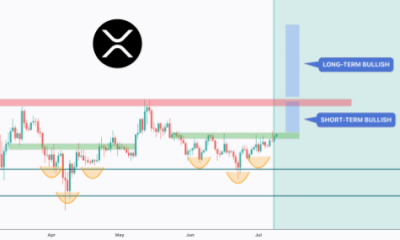
 Blockchain1 week ago
Blockchain1 week agoXRP Forms Inverse Head And Shoulders Pattern, Why A Surge To $3.3 Is Possible – Crypto News
-

 Blockchain1 week ago
Blockchain1 week agoBlockchain Can Aid Action Against Criminals – Crypto News
-
Business1 week ago
Reserve Bank of Australia Advances Project Acacia To Test CBDCs, Stablecoins – Crypto News
-

 others1 week ago
others1 week agoUS Government To Add Another $10,000,000,000,000 to National Debt by 2029, According to Prediction Markets – Crypto News
-

 Technology1 week ago
Technology1 week agoMicrosoft Outlook down: Global outage hit users worldwide, login and mail issues persist – Crypto News
-

 Blockchain1 week ago
Blockchain1 week agoAnt Group Eyes USDC Integration Circle’s: Report – Crypto News





![The Endgame for fiat currencies [Video]](https://dripp.zone/news/wp-content/uploads/2025/07/The-Endgame-for-fiat-currencies-Video-Crypto-News-400x240.jpg)
![The Endgame for fiat currencies [Video]](https://dripp.zone/news/wp-content/uploads/2025/07/The-Endgame-for-fiat-currencies-Video-Crypto-News-80x80.jpg)
